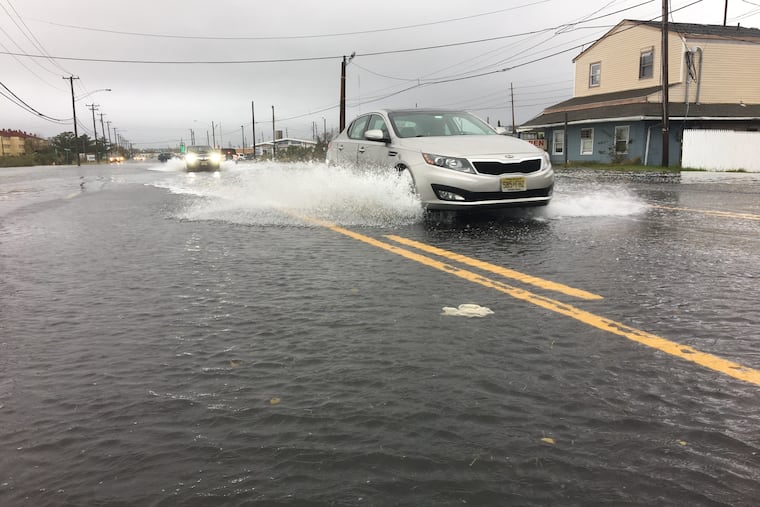N.J. affordable housing is among nation’s most vulnerable to climate-change flooding, study finds
A new study says the number of affordable housing units at risk from coastal flooding and sea level rise is expected to triple with New Jersey in the crosshairs.

Affordable housing in Camden and Atlantic City is among the most vulnerable in the United States to the impact of rising sea levels and flooding due to climate change, according to a new analysis by scientists at Climate Central.
The study, published this week in Environmental Research Letters, found the number of affordable housing units at risk from coastal flooding and sea-level rise is expected to triple by 2050 with New Jersey, New York, and Massachusetts having the largest shares of vulnerable units.
Researchers looked at affordable housing databases, topography, flood risk maps, and projected sea-level rise to calculate their findings. Although other types of coastal housing are at risk of flooding, the scientists said they wanted to focus on low-lying affordable housing because these residents are particularly vulnerable.
“We’re talking about housing here that serves populations with annual incomes at about $12,000 to $20,000 a year,” said Todd Nedwick of the National Housing Trust. “So that often includes elderly and disabled Americans.”
Nedwick said there is a worsening nationwide shortage of affordable rental housing, making any additional losses even more troubling.
Housing is considered affordable to low-income renters if it costs no more than 30% of their income. But rents have increased by more than 25% over the last decade while wages have remained largely stagnant, according to research. The result is that a majority of poor renting families devote at least half their income to housing, and a quarter dedicate 70%. People living in affordable housing tend to be single parents or are minorities.
Less expensive housing tends to be older, of poorer quality, and less structurally sound. Those types of units are also more vulnerable to flood damage.
At the same time, the frequency of coastal floods has risen sharply in recent decades, with rising seas expected to make tidal and storm flooding worse. By 2050, if carbon emissions remain the same, researchers said, major flooding could occur 40 times more often at half of U.S. locations they studied. The number of affordable housing units exposed to climate effects could triple to almost 25,000 units.
New Jersey affordable housing faces the most exposure, with almost 6,825 units at risk, a fourfold increase since 2000, a baseline year used in the study. But Pennsylvania also could see a significant impact.
The scientists ranked the top 20 cities with the most projected units exposed by 2050. These cities account for three-quarters of all affordable housing at risk; cities in the Northeast and California are most vulnerable.
New York City is expected to have 4,000 units at risk per year by 2050, the largest single figure. Five cities in New Jersey ranked in the top 20.
Four of those, Atlantic City, Camden, Penns Grove, and Salem, are among the poorest urban areas in the country, the study authors said, with an average median household income of $28,618. In Atlantic City, more than half the affordable housing stock is at risk.
Sea-level rise is particularly acute in New Jersey because the state is also sinking along the coasts for geological reasons.
Carlos Martin, of the Urban Institute, said people living in areas with chronic flooding could try to live elsewhere, but that’s especially difficult for poor people, particularly those who use government vouchers to pay rent.
“Renters, for example,” Martin said, “... will be forced to move to tighter housing markets that quite frankly may not accept them.”
Martin noted that owners of the affordable units also face loss of property value.
The authors of the report concluded that municipalities with affordable housing facing higher water levels “may require near-term measures to successfully reduce flood threats.”
“The combination of physical vulnerability of affordable housing infrastructure, socioeconomic vulnerability, and more frequent flooding due to sea level rise presents a triple threat to residents of the country’s already scarce affordable housing,” the researchers wrote.